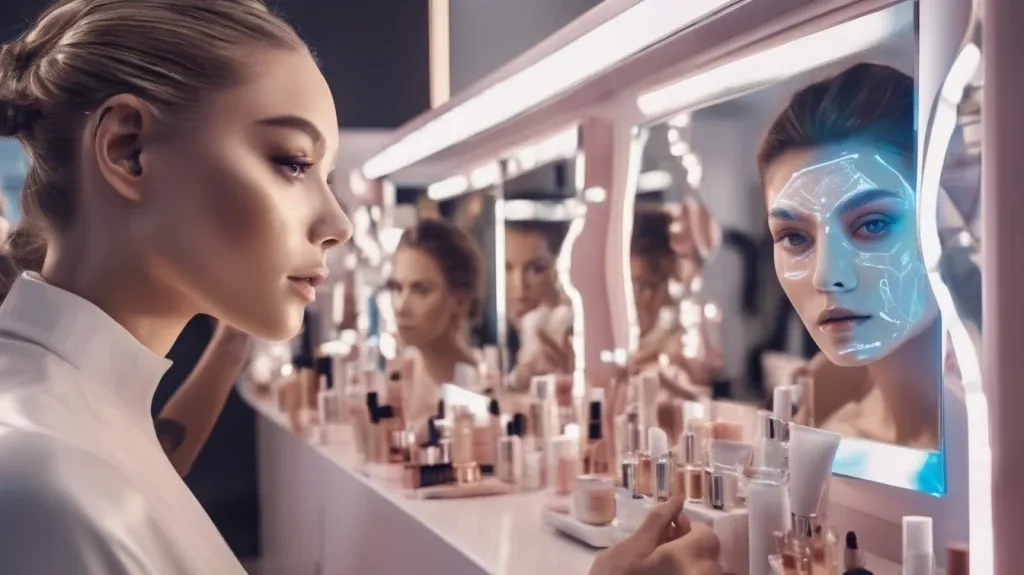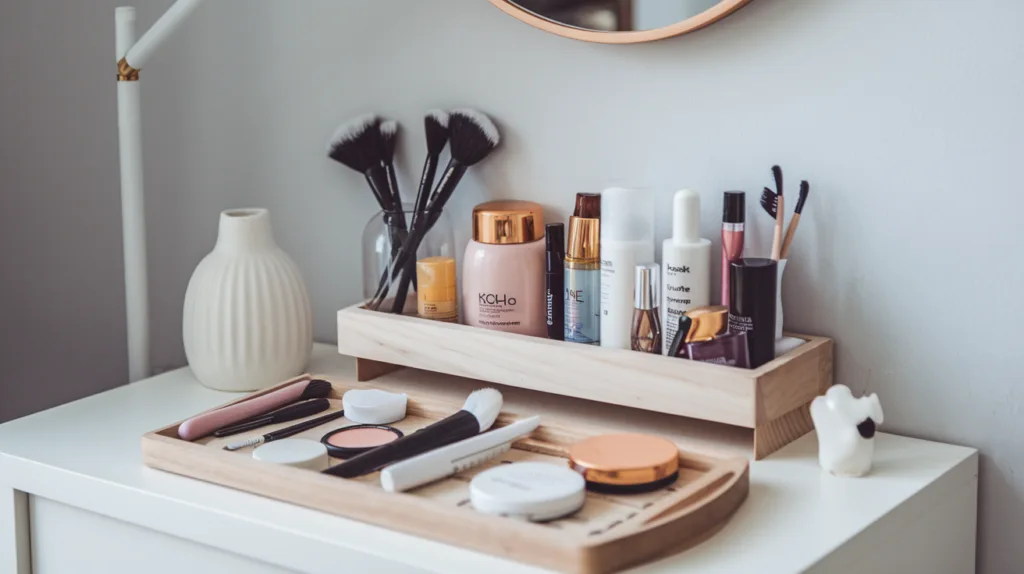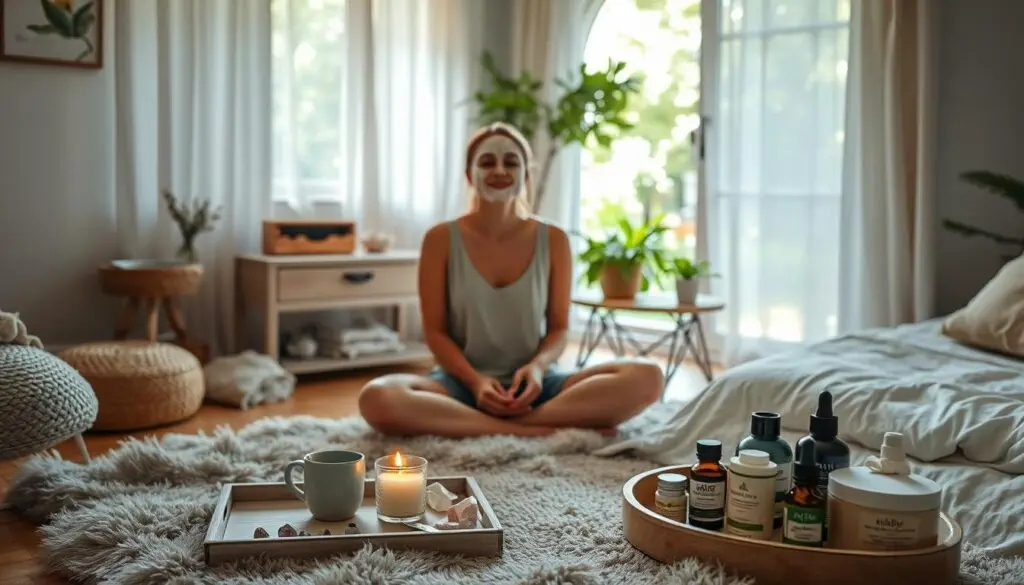The beauty counter has long been a place of hope and frustration. For decades, the search for the perfect foundation shade, the ideal skincare routine, or the lipstick that truly complements one’s complexion has been a process of educated guesses, expensive trial-and-error, and advice from sales associates working with limited information. We’ve all been there: holding a bottle against our jawline under the unforgiving glare of department store lighting, hoping the color that looks right in the store won’t look like a mask in natural daylight. This traditional model, built on mass production and generalized recommendations, is rapidly being dismantled by a force that operates not on intuition, but on data: Artificial Intelligence. AI is not merely a new tool for beauty brands; it is a foundational technology that is fundamentally restructuring how consumers discover, test, and purchase products, shifting the industry from catering to the masses to serving the individual with uncanny precision.

This transformation extends far beyond a simple shade-matching app. It’s an intricate web of machine learning, computer vision, and predictive analytics that is influencing every facet of the industry. From the formulation of a serum in a laboratory to the personalized advertisement that appears on your social media feed, AI is the silent architect of modern beauty. It powers the virtual mirrors that allow you to try on fifty shades of lipstick in thirty seconds without touching a single product. It analyzes a selfie to diagnose skin conditions with an accuracy that can rival a dermatologist’s initial assessment. It even predicts the next viral ingredient before it hits the mainstream. We are witnessing a seismic shift from a product-centric to a consumer-centric universe, where the ultimate goal is not to sell a million units of one lipstick, but to create a unique lipstick for a million different individuals. This article explores the depth and breadth of this AI-driven makeover, examining the technologies powering this change, the profound benefits for consumers, and the critical ethical questions that arise when our faces become data points.
The Personalization Engine

The core promise of AI in beauty is the end of the one-size-fits-all approach. For years, “personalization” in beauty meant little more than a multiple-choice quiz on a website that led to one of a few pre-packaged “solutions.” Today, AI-powered hyper-personalization is creating a new paradigm where products and routines are formulated for a market of one. This is achieved through the sophisticated analysis of vast datasets, including user-submitted photos, environmental factors, and lifestyle inputs.
The most visible application of this is in personalized skincare. Companies like Proven Skincare and Atolla have built their entire business models on this concept. The process typically begins with the user providing information through an in-depth online assessment. But the crucial element is often a photograph. Using advanced computer vision algorithms, the AI analyzes the user’s selfie to identify a wide array of skin concerns with remarkable granularity. It can measure wrinkle depth, quantify pore size, detect hyperpigmentation, assess hydration levels, and identify redness or irritation. The AI cross-references this visual data with other inputs provided by the user, such as their geographic location (to account for UV index and pollution levels), diet, stress levels, and age.
This mountain of data is then processed by a machine learning model that has been trained on thousands of dermatological studies and a massive database of cosmetic ingredients. The system doesn’t just recommend a product off the shelf; it designs a custom formulation. It might determine that a user in a humid, high-pollution city like Bangkok needs a lighter, antioxidant-rich serum, while a user in a dry, sunny climate like Phoenix requires a formula with more potent hydrators and sun-damage repair agents. The result is a unique cocktail of ingredients, with concentrations adjusted specifically for that individual’s needs. This process transforms skincare from a reactive guessing game into a proactive, data-informed science.
This level of customization is extending into the world of cosmetics. The elusive search for the perfect foundation match is one of the oldest problems in beauty, particularly for consumers with skin tones that fall outside the limited range traditionally offered by major brands. AI is providing a definitive solution. Brands like L’Oréal and Shiseido have developed devices that use sophisticated colorimeters and AI to scan a person’s skin in multiple places. The device captures precise readings of tone and undertone, unaffected by the vagaries of ambient lighting. The AI then processes this data and, in some cases, feeds it directly to an in-store machine that mixes a custom-blended bottle of foundation on the spot. This not only guarantees a perfect match but also opens the door for unparalleled inclusivity, ensuring that every single person, regardless of their skin tone, can have a product made just for them. It signals a move away from a 40-shade range to an infinite-shade range, tailored to the individual.
The End of Guesswork: Augmented Reality and Virtual Try-On

One of the greatest barriers to online beauty sales has always been the inability to try a product before buying it. Color cosmetics are deeply personal and tactile; how a lipstick shade looks on a screen is often vastly different from how it appears on one’s own lips. Augmented Reality (AR) has shattered this barrier, bringing the physical try-on experience into the digital realm with astonishing fidelity.
AR-powered virtual try-on (VTO) technology uses a smartphone’s camera to map a user’s face in real-time. Sophisticated algorithms identify key facial features—the exact shape of the lips, the curve of the eyelids, the line of the cheekbones—with incredible precision. Once this facial map is created, the technology can overlay digital products onto the user’s image seamlessly. The user can turn their head, smile, and talk, and the digital makeup moves with them as if it were actually applied. The AI behind this technology is complex; it must account for lighting conditions, skin texture, and the way different product finishes (like matte, gloss, or shimmer) interact with light.
Leading brands have integrated this technology directly into their websites and dedicated apps. L’Oréal’s ModiFace, one of the pioneers in this space, provides VTO solutions for dozens of major brands, allowing customers to experiment with hundreds of products from the comfort of their homes. This has a profound impact on consumer behavior. It removes the friction and hygiene concerns of using communal testers in a physical store. It encourages experimentation, as a user who might be hesitant to try a bold blue eyeliner in public can do so with a single tap on their screen. This freedom to explore leads to greater confidence in purchasing decisions.
The business implications are enormous. E-commerce sites that integrate VTO technology see significantly higher conversion rates and lower product return rates. When a customer has virtually “tried on” a product and seen how it looks on their own face, they are far more likely to complete the purchase and be satisfied with it upon arrival. This technology is also revitalizing the in-store experience. “Smart mirrors” in stores from MAC to Sephora allow shoppers to test entire product lines without the messy and time-consuming process of application and removal. They can instantly see how a full look comes together, save their favorites, and even get AI-generated recommendations for complementary products. AR is not just a novelty; it is a powerful sales and marketing tool that bridges the gap between the digital and physical worlds, making beauty shopping more interactive, efficient, and enjoyable.
Inside the Lab: AI’s Role in Formulation and Discovery

While consumer-facing applications like personalization and AR get most of the attention, some of the most impactful uses of AI in the beauty industry are happening behind the scenes, in research and development laboratories. AI is dramatically accelerating the pace of innovation, helping scientists create more effective, stable, and desirable products.
One of the most exciting frontiers is ingredient discovery. The cosmetic science landscape is vast, with thousands of potential active ingredients and millions of possible combinations. Sifting through scientific literature, patent filings, and clinical trial data to find novel and effective compounds is a monumental task for human researchers. AI, however, can process and analyze this information at a speed and scale that is simply not humanly possible. Machine learning algorithms can scan millions of documents to identify patterns and connections, flagging plant extracts or synthetic molecules that show promise for specific applications, such as improving skin elasticity or protecting against environmental damage. For example, beauty giant Givaudan uses AI to analyze biological data and identify natural ingredients that can be developed for cosmetics, effectively speeding up the R&D pipeline for new active compounds.
Beyond finding new ingredients, AI is also optimizing product formulations. Creating a stable, effective, and sensorially pleasing product—like a cream that feels luxurious but not greasy, and remains stable in various temperatures—is a complex balancing act of chemistry. AI platforms can run thousands of virtual experiments, simulating how different combinations and concentrations of ingredients will behave. This predictive modeling allows formulators to rule out unstable combinations before ever stepping into the lab, saving immense amounts of time and resources. It can predict a formula’s texture, absorption rate, and long-term stability, helping chemists arrive at the optimal product with far greater efficiency.
Furthermore, AI is becoming an indispensable tool for trend forecasting. In the fast-paced world of beauty, staying ahead of consumer demand is critical. AI systems analyze a firehose of real-time data from social media platforms like TikTok and Instagram, search engine trends, online retail sites, and even fashion runway shows. By identifying emerging patterns—a sudden spike in searches for “ceramides,” a viral makeup look, or a growing interest in sustainable packaging—these systems can predict which ingredients, colors, and product categories will be in high demand months in advance. This allows brands to be more proactive in their product development and marketing strategies, ensuring they have the right products on the shelf at the right time.
The Data Dilemma: Navigating Privacy and Bias

The rise of AI in beauty is powered by data—specifically, our personal and biometric data. Every selfie we upload for a skin analysis, every virtual lipstick we try on, and every preference we share contributes to a massive repository of information. This reality raises significant and necessary questions about data privacy and algorithmic ethics.
When a consumer entrusts a company with a close-up, high-resolution image of their face, where does that data go? How is it stored, who has access to it, and for what purposes is it being used beyond the initial recommendation? Beauty companies have a profound responsibility to be transparent about their data practices. Clear privacy policies, secure data storage, and the option for users to have their data deleted are not just best practices; they are essential for building and maintaining consumer trust. The potential for this data to be used for other purposes, such as training facial recognition algorithms for surveillance or being sold to third-party data brokers, is a serious concern that the industry must proactively address with robust ethical guidelines and regulations.
Equally critical is the issue of algorithmic bias. An AI model is only as good as the data it is trained on. If the datasets used to train a skin analysis AI predominantly feature images of light-skinned individuals, the algorithm will be less accurate at diagnosing conditions or recommending products for people with darker skin tones. This can perpetuate and even amplify existing inequalities in the beauty industry, where for decades, products and marketing have centered on a narrow range of skin tones and features. A foundation-matching AI that fails to accurately identify undertones in deep skin or an anti-aging algorithm that misinterprets the facial structure of a particular ethnicity is not just a technological failure; it is a failure of inclusivity.
To combat this, it is imperative for companies to build and train their AI models on diverse and representative datasets. This requires a conscious and deliberate effort to collect images and data from people of all ages, ethnicities, genders, and skin types. Auditing algorithms for bias must become a standard part of the development process. The goal of AI in beauty should be to create a more inclusive and equitable industry, and that can only be achieved if the technology is designed from the ground up to serve everyone fairly and accurately.
The Future of Beauty: Predictive, Proactive, and Participatory

The integration of AI into the beauty industry is still in its early stages, and the possibilities for the future are even more transformative. We are moving toward a world where beauty and wellness are inextricably linked, with AI serving as the intelligent hub connecting them.
The next wave of innovation will likely come from at-home diagnostic devices. Imagine a smart mirror in your bathroom that doesn’t just show your reflection but analyzes your skin daily. It could track changes in hydration, the emergence of fine lines, or the fading of hyperpigmentation over time, providing continuous feedback on whether your current routine is working. This mirror could connect to your smartphone, correlating skin health with data from other apps that track your diet, sleep patterns, and exercise. It might one day be able to suggest that a recent breakout is linked to a lack of sleep or that increased skin dryness corresponds to a change in your diet, offering holistic wellness advice alongside product recommendations.
AI will also play a pivotal role in advancing sustainability within the industry. By creating hyper-accurate product recommendations and enabling virtual try-ons, AI already helps reduce waste from product returns and discarded samples. In the future, it could optimize supply chains by more accurately predicting demand, reducing overproduction. AI can also assist in the development of more sustainable formulations, such as identifying biodegradable ingredients or creating waterless products, helping to minimize the industry’s environmental footprint.
Ultimately, the future of beauty is one where the consumer is an active participant in their own product creation. AI will facilitate a continuous feedback loop between the user and the brand. As your at-home device tracks your skin’s progress, that data can be sent back (with your permission) to the company, which can then use AI to tweak your custom formula for your next delivery. Your skincare and makeup could evolve with you, adapting to seasonal changes, life events, and your long-term goals.
Conclusion
The infusion of Artificial Intelligence into the beauty industry represents far more than a technological upgrade. It is a fundamental paradigm shift that is placing the individual at the center of the universe. The impersonal and often frustrating experience of navigating a sea of mass-marketed products is giving way to a new era of precision, personalization, and participation. AI is empowering consumers with unprecedented knowledge about their own skin and features, while virtual tools are providing the freedom to experiment and discover with confidence. From the molecular level of ingredient discovery to the global scale of trend forecasting, AI is making the creation, marketing, and selling of beauty products smarter, faster, and more efficient.
However, this powerful transformation comes with a shared responsibility. Brands must champion data privacy and work diligently to eradicate algorithmic bias to ensure that this new era of beauty is truly inclusive and equitable for all. The human element—the expertise of dermatologists, the artistry of makeup professionals, and the personal connection of a consultation—will remain invaluable, but it will be augmented and enhanced by the power of data. The algorithmic makeover is here, promising a future where our beauty routines are as unique as our own faces, perpetually learning and adapting to help us look and feel our best.




